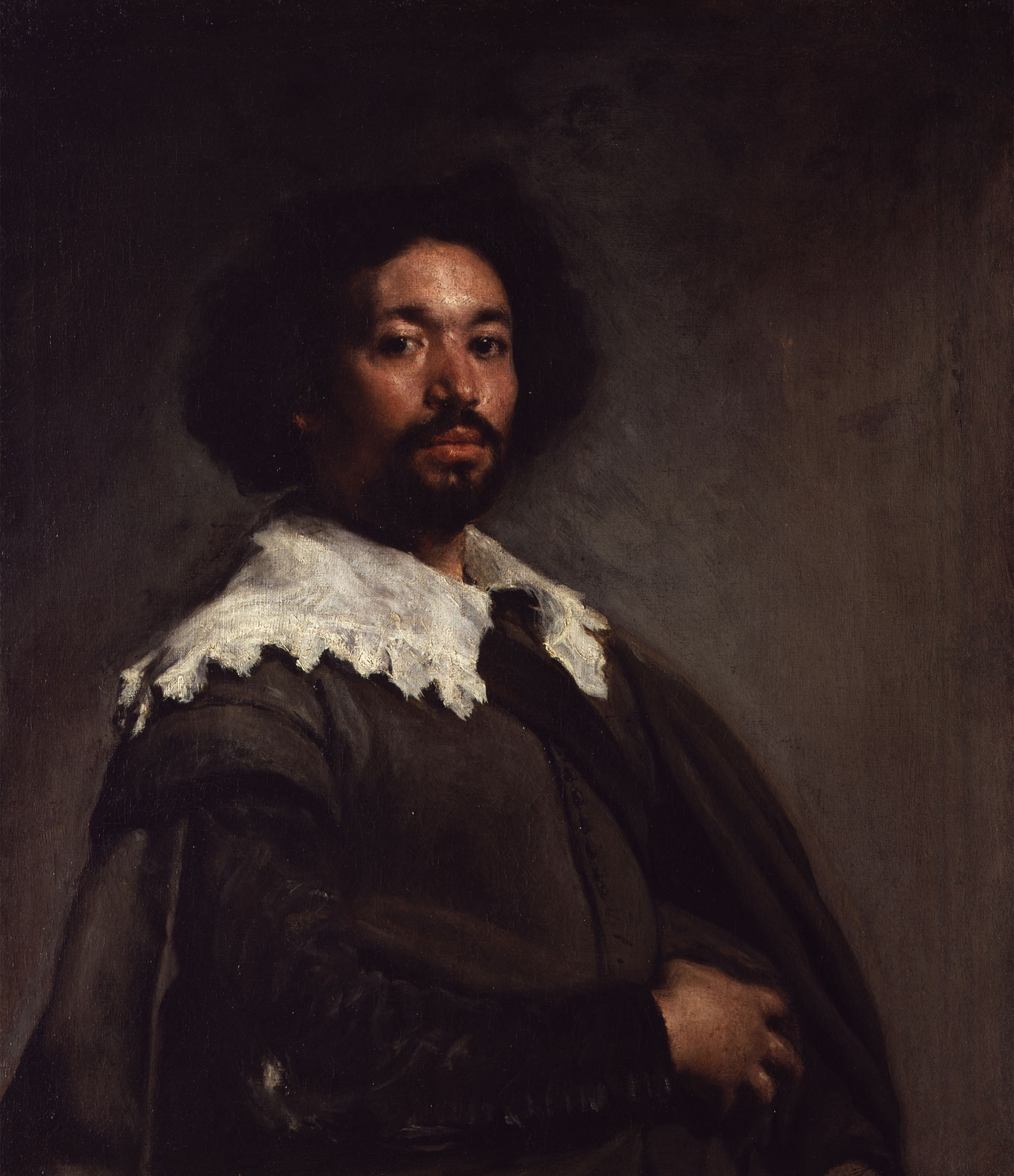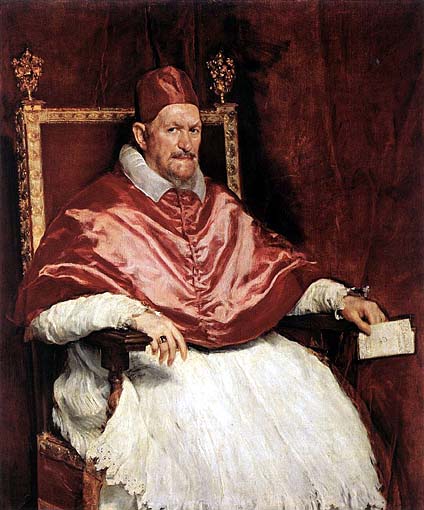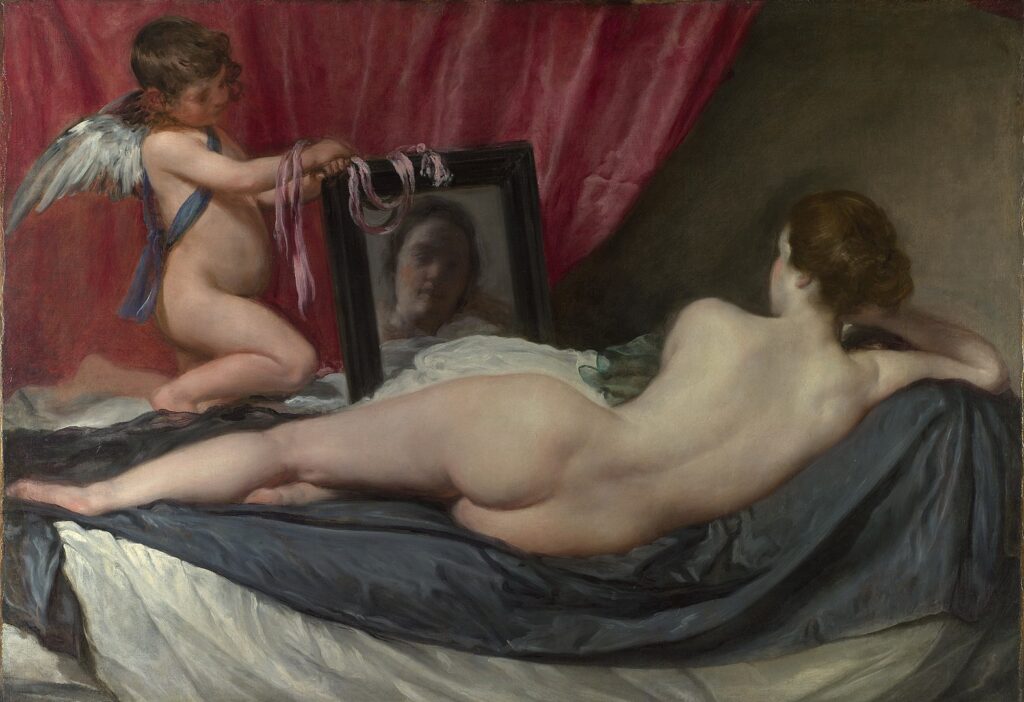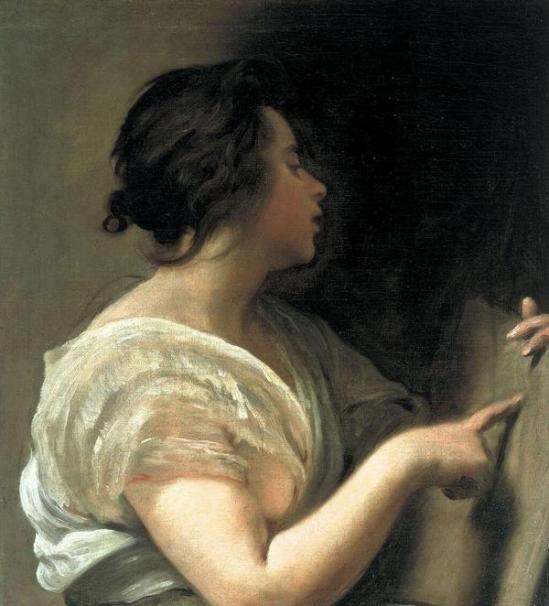One of the most memorable portraits in art history, that of Juan de Pareja painted by Velazquez, is an image of a slave about to be freed.

De Pareja was indeed born in slavery and in this condition was inherited by Velazquez, who from the 1630s made him his trusted personal assistant. In 1650, during his second Italian trip and at the same time as the portrait, the painter set him free with the stipulation that he would not escape or commit criminal acts for at least four years. The deed, still preserved at the State Archives in Rome, is entitled Donatio libertatis and begins as follows: “Ill.mus D. Didacus Silva Velasco Hispalensis filius quondam Jo: Rodriches in Alma Urbe ad presentem residens [. ..] asserens a multis annis retinuisse penes se uti captivum vulgo dicto per schiavo Joannes de Parecha filium quondam altris Joannis de Parecha de Antechera Maleghens diocesis […]”. From the deed we learn that De Pareja was named after his father, an event that’s far from uncommon, and that he was born in Antequera, a small town north of Malaga that until the ethnic cleansing of 1609 was home to a very large community of moriscos, which served to avoid a misunderstanding that arose upon the discovery of a 1630 document in which a Sevillian namesake of his “de oficio pintor” qualified as a free citizen.
De Pareja, whom Velazquez had meanwhile taught to paint, in turn became a painter (one of his Vocations of St. Matthew is on display in the Prado Museum in Madrid). An uplifting tale that is more legendary than not, contained in Antonio Palomino’s “El Museo Pictorico y Escala Optica” (1715-1724) (a sort of counterpart to Vasari’s “Vite” about Spanish Baroque painting), tells how De Pareja allegedly juxtaposed one of his paintings with those of his master just before a visit by Philip IV to the studio and how the latter, once the deception was revealed, would expressly ask Velazquez to release him as a reward for his talent, but apparently De Pareja had no need for these stratagems. What bound him to Velazquez was a relationship of trust such that allowed the slave to serve as a witness for his master in multiple notarial contracts aimed at purchasing statues and paintings on the king’s behalf and, once he was freed, to have him remain at first in the service of the painter and later of his son-in-law Juan Bautista Mazo until his death dated to 1670 at about age sixty.
As an aside perhaps it is worth noting that in good probability the painting of him was made by Velazquez as a workout, since he had not touched his brushes for months, in preparation for the even more famous portrait he had undertaken to paint for Innocent X.

But this second trip for Velazquez was definitely eventful, perhaps even much more than he would have expected or hoped. In the archives indeed there is another interesting document about his Roman stay. On November 13 1652, almost two years after the painter’s return to Spain, a deed by the same notary mentioned above (evidently the trusted notary of the Spanish gentlemen stationed in Rome) is titled Restitutio pueri Pro D. Didaco de Silva Velasco and states “Jo infrascritto in virtu della presente fo et constituisco mio Procuratoro a Giacomo Aquaviva Romano a poter in mio nome, andare da Marta Vedova per ricevere Antonio figliolo naturale figliolo [sic] del S. D. Diego de Silva Velazquez e di questo asieme con il pagamento deli elementi che a detta Marta pagara in conformita del mandato de Mons.re Vicegerente […] riportarne e farne quietantia respetivamente in forma e per causa di questo fare tutto cio che sara necessario come se ce fosse io presente prometende etc. in fede questo di 13 9bre 1652, Don Gio. de Cordova mano proprio“1.
From the aforementioned and attached warrant of the Vicegerente, i.e., the vicar general of the diocese of Rome Ascanio Rivaldi, we learn that “quoddictus Antonius sit flius dicti instantis [i.e. Velazquez], et quod dicta Marta non bene tractaverit, et tractet dictum Antonium“. Marta, as we learn from the receipt duly issued by her in the amount of seven scudi and thirty baiocchi, was a widow “filia quondam Joannis de Fatis relicta quondam Dominici Montanini […] nutrix pueri Antonii [illegible] filii naturalis D. Didaci de Silva Velasco” who apparently had offered her services (very poorly, by the way) as nanny for a son whom Velazquez had had from a fleeting Roman affair.
This second Italian trip by Velazquez, unlike the first, was not intended so much for his artistic training (also because he was now at his fullest and most mature stage) as for the systematic collection of paintings and statues to be purchased for the royal collections in addition to finding and hiring an artist to be employed in the decoration of the Alcazar2. The signer of the second notarial act, Juan de Còrdoba, was Philip IV’s roman agent and the person responsible for handling all the practical and administrative issues involved in paying for, collecting, and shipping the works selected by Velazquez. Figuring out who de Còrdoba really was and what network of contacts and friendships he had was made possible by the discovery of his testamentary wills, which, quite surprisingly for what could after all be considered to have been a mere shipper, included an unsuspected collection of about forty paintings and considering that the beneficiaries included some of the most prominent figures in the Curia it is not difficult to understand how he had succeeded in procuring the Vicegerent’s support for what in all respects was a private matter. It is, moreover, intuitable that if de Còrdoba was entrusted by Velazquez to take care of the destiny of little Antonio (even ending up adopting him) there must have been a relationship of trust and friendship between the two of them that went far beyond the business sphere.
It should also be said that Velazquez in all likelihood did not abandon the child on a whim. His Italian sojourn was stretching far beyond what was planned, and Philip IV had begun writing to him regularly and in increasingly less conciliatory terms injuncting him to return to Madrid. We know that he arrived in Spain on June 23, 1651, so if at the end of the following year Antonio was still a babe in swaddling clothes (“in senu et brachii“) it is likely that the painter had never seen his son of whom, by the way, after the above documentation there are no more traces which might suggest that he died at an early age. We know that years later, in 1657, Velazquez would ask his king for permission to return briefly to Italy but such permission would be denied him. Whether he had decided to undertake that journey to rush to his little son’s bedside (or grave), perhaps alerted by missives from his old friend who had taken him in, we have no way of knowing.
But who was the mother? Here the matter becomes complicated because according to the elements in our possession there are two women at stake, moreover with similar names. The first (and in my humble opinion the most probable) is Flaminia Triva, sister and helper of Antonio Domenico Triva, a (admittedly not very gifted) pupil of Guercino, as well as the probable model of the “Sibilla con tabula rasa” (Meadows Museum, Dallas) and especially of the very famous “Venus in the Mirror” (or “Venus Rokeby,” National Gallery, London).
The girl, also a painter, followed her brother in his itinerant career, and in those years we know them to be active between Bologna and the rest of Emilia, where Velazquez would pass several times during his wanderings in search of works of art to purchase. It is not unlikely that Velazquez, during one of his stops in Emilia, met the Triva family, perhaps in memory of their master Guercino whom Velazquez had met on his 1629 trip, and that something more than a chat took place with the young and pleasing Flaminia.
The other, mentioned by Palomino as “excelente pintora” and evidently confused with the first perhaps because of her name, was the Roman noblewoman Flaminia Trionfi. She too had been speculated to have posed for Venus but I personally find it highly unlikely that a member of the nobility, even a minor one, would have posed nude for a Spanish painter just passing through town.

- I hereby charge Giacomo Aquaviva Romano to go to the widow Marta to take back Antonio, natural son [sic] of S. D. Diego de Silva Velazquez, and to pay the said Marta in accordance with the mandate of Mons. Re Vicegerente […] bring back and make quietanza of it and because of this do all that will be necessary as if I were present. In witness whereof this 13th day of November 1652, by the own hand of Don Gio. de Cordova.
- The artist in charge was apparently supposed to be the celebrated Pietro da Cortona but given the impossibility of hiring him they had to fall back on the more approachable Angelo Michele Colonna and Agostino Mitelli

